The deep ocean remains one of Earth’s final frontiers, with vast regions still unexplored and countless species yet to be discovered. Below the sunlit surface waters lies a realm of perpetual darkness, crushing pressure, and near-freezing temperatures. Despite these extreme conditions, life not only exists but thrives in the deepest parts of our oceans. From the mesopelagic twilight zone down to the hadal trenches more than 36,000 feet below sea level, remarkable creatures have evolved extraordinary adaptations to survive. These deep-sea inhabitants often look like they belong in science fiction rather than on our own planet. Let’s dive into the mysterious world of 15 fascinating animals that call the deepest oceans home.
15. Yeti Crab (Kiwa hirsuta)

Discovered only in 2005, the yeti crab earned its nickname from the dense, hair-like setae covering its claws and legs, giving it a furry appearance reminiscent of the mythical Himalayan creature. These unusual crustaceans live at hydrothermal vents approximately 7,200 feet deep in the Pacific Ocean. Growing to about 6 inches long, yeti crabs have evolved a unique lifestyle centered around the chemosynthetic bacteria that grow on their hair-like structures. They wave their claws over hydrothermal vents to cultivate these bacteria in a form of “farming,” then scrape them off as a food source using specialized mouth appendages. This symbiotic relationship allows them to thrive in an environment too toxic for most life forms. The setae also contain chemoreceptors that help the crabs detect chemicals in the water, crucial for locating hydrothermal vents with suitable conditions for their bacterial gardens. Unlike most deep-sea creatures, yeti crabs inhabit areas rich in nutrients and energy, creating oases of life in the otherwise sparse deep ocean.
14. Giant Squid (Architeuthis dux)

The legendary giant squid haunts the deep mesopelagic and bathypelagic zones, typically at depths between 1,000 and 3,000 feet. With eyes the size of dinner plates—the largest in the animal kingdom at up to 10 inches in diameter—these cephalopods can detect the faintest light in the darkness. Their massive bodies can reach lengths of up to 43 feet, including their long feeding tentacles equipped with powerful suckers ringed with sharp teeth. Despite their enormous size, giant squid remained elusive to science for centuries, with the first live specimen photographed in its natural habitat only in 2004 and the first video footage captured in 2012. They hunt using a lightning-fast attack strategy, extending their two specialized feeding tentacles to snatch prey before drawing it toward their powerful beak.
13. Dumbo Octopus (Grimpoteuthis)
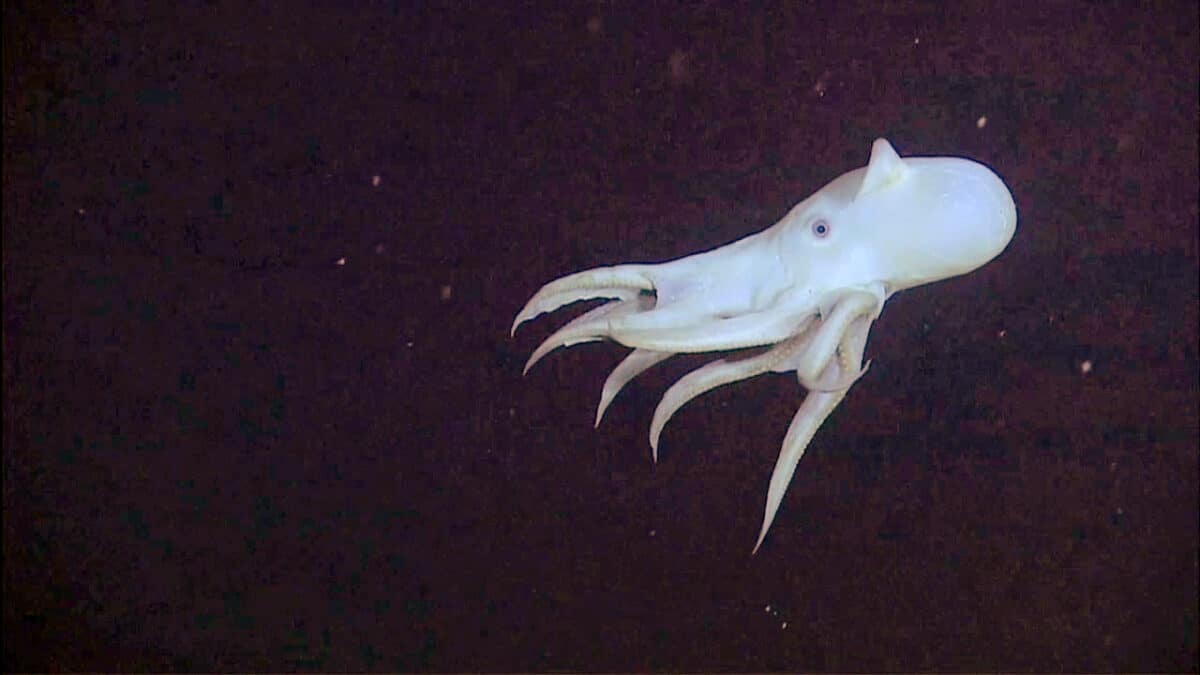
Named for their resemblance to Disney’s flying elephant, Dumbo octopuses are some of the deepest-dwelling octopuses known to science. These charismatic cephalopods have been found at staggering depths of up to 23,000 feet in the hadal zone. Their most distinctive feature is the pair of ear-like fins protruding from the top of their head, which they use to “fly” through the water with gentle, graceful movements. Unlike most octopuses, Dumbo octopuses don’t produce ink and have largely lost their ability to change color—adaptations unnecessary in the lightless deep. Their bodies are semi-transparent and typically reach only 8-12 inches in length. Rather than actively hunting, they primarily hover above the seafloor, using their arms and webbing to capture small crustaceans, worms, and other invertebrates they encounter.
12. Vampire Squid (Vampyroteuthis infernalis)

Despite its menacing name—which translates to “vampire squid from hell”—this ancient living fossil is neither vampire nor squid but occupies its own distinct order between octopuses and squids. Dwelling primarily in the oxygen minimum zone at depths of 2,000 to 3,000 feet, the vampire squid has evolved remarkable adaptations for survival. Its gelatinous body grows to about 1 foot in length and is covered with light-producing organs called photophores. When threatened, it can wrap its webbed arms around its head, turning inside-out to expose spiny projections in a defensive posture. Perhaps its most impressive adaptation is metabolic: vampire squid can survive with almost no oxygen, making them perfectly suited for the oxygen-depleted waters of the deep. Unlike their predatory relatives, they primarily feed on marine snow—the constant shower of organic debris falling from upper ocean layers.
11. Frilled Shark (Chlamydoselachus anguineus)

Often described as a “living fossil,” the frilled shark has remained virtually unchanged for 80 million years and represents one of the most primitive shark species still swimming in our oceans. These ancient predators typically inhabit depths between 1,600 and 3,300 feet along continental shelves and slopes. Growing up to 6.5 feet long, frilled sharks have an eel-like body with a distinctively primitive appearance featuring six gill slits with frilly edges (giving them their name). Their jaws are lined with around 300 trident-shaped teeth arranged in 25 rows—a terrifying dental array designed to trap squid, fish, and other sharks. Unlike most modern sharks, frilled sharks have an incredibly flexible jaw that can lunge forward to capture prey in a snake-like strike. They’re rarely seen by humans due to their deep-sea habitat, but occasionally venture into shallower waters when ill or during upwellings of cold water.
10. Blobfish (Psychrolutes marcidus)
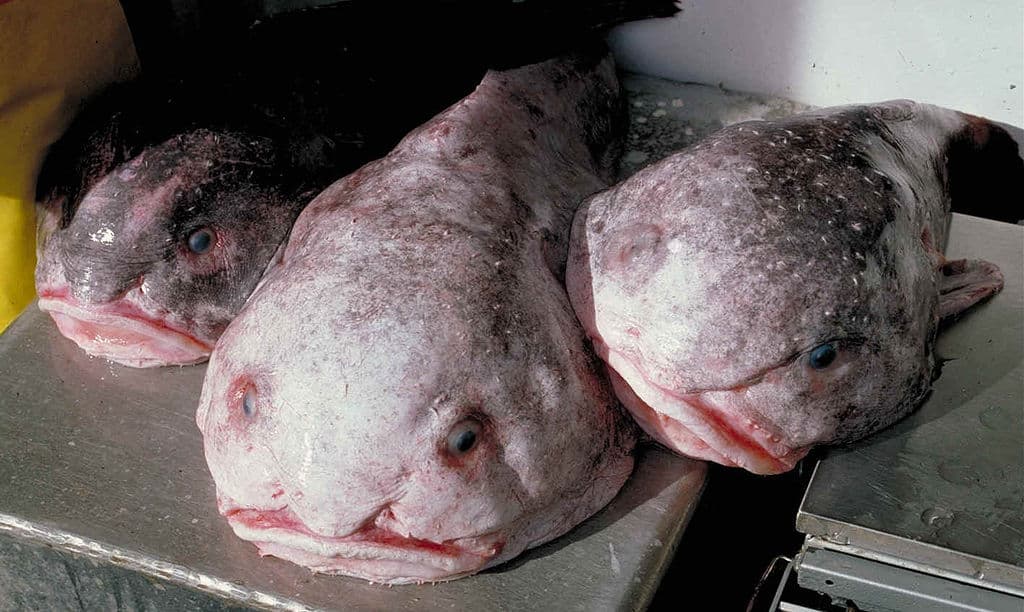
The blobfish gained internet fame after being voted the “world’s ugliest animal” in 2013, but this unflattering reputation stems from a misunderstanding of its natural state. Native to depths between 2,000 and 4,000 feet off the coasts of Australia and New Zealand, the blobfish has a density slightly less than water, allowing it to float just above the seafloor with minimal energy expenditure. What appears gelatinous and shapeless at the surface is actually an adaptation to the extreme pressure of the deep sea. Under natural conditions, the blobfish looks much more like a conventional fish; it’s only when brought to the surface that decompression causes its body to lose structure dramatically. Rather than actively swimming to hunt, blobfish are ambush predators that open their large mouths to consume edible particles drifting by in deep-sea currents, including crustaceans, sea urchins, and marine snow.
9. Barreleye Fish (Macropinna microstoma)
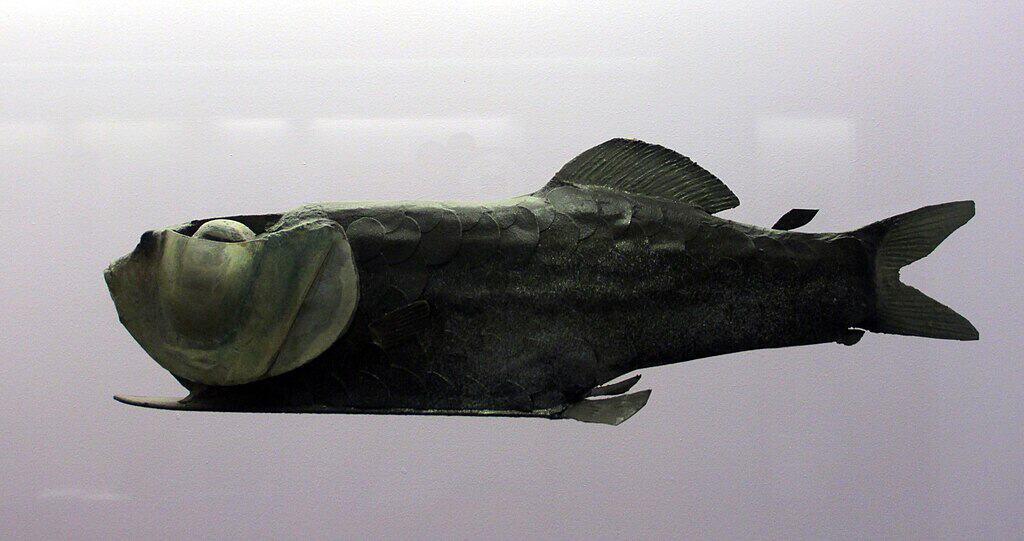
Perhaps one of the strangest-looking deep-sea creatures, the barreleye fish is defined by its transparent head and tubular, upward-facing eyes. Living at depths between 2,000 and 2,600 feet in the Pacific Ocean, these fish grow to only about 6 inches long. Their most remarkable feature is the fluid-filled, transparent dome that covers their head, through which their tubular, green eyes are visible. These highly specialized eyes can rotate within the transparent shield, allowing the fish to look upward to spot prey silhouetted against the faint light from above, then pivot to face forward when pursuing food. The barreleye’s eyes are extremely sensitive to light, enabling them to detect even the faintest bioluminescent flashes in the darkness. They primarily feed on jellies and small crustaceans, using their large, flat fins to maintain precise position while stalking prey in the water column.
8. Anglerfish (Lophiiformes)

Among the most iconic deep-sea creatures, anglerfish are famous for the bioluminescent lure that dangles from the female’s forehead—a modified dorsal spine containing light-producing bacteria. This natural fishing rod, which gives the order its name, attracts prey in the darkness of the bathypelagic zone, typically at depths between 3,000 and 6,500 feet. There are more than 200 species of anglerfish, most characterized by disproportionately large heads and mouths filled with needle-like teeth. Perhaps most fascinating is their extreme sexual dimorphism: males are tiny compared to females and lack lures entirely. In many species, males permanently fuse to females as parasitic mates, connecting to their blood vessels and eventually losing most of their organs except those needed for reproduction. This bizarre reproductive strategy ensures fertilization success in the vastness of the deep ocean where encounters between individuals are rare.
7. Goblin Shark (Mitsukurina owstoni)

Often called a “living fossil,” the goblin shark represents a lineage that has remained largely unchanged for 125 million years. These rare deep-sea sharks typically inhabit waters between 4,000 and 5,000 feet deep, though they’ve been found as deep as 4,300 feet and as shallow as 130 feet. Growing up to 12 feet long, goblin sharks are instantly recognizable by their elongated, flattened snout (resembling a sword blade) and protrusible jaws that can rapidly extend outward to capture prey. When a goblin shark detects prey with the electromagnetic sensors in its snout, its jaw can shoot forward nearly the length of its snout in less than a second—one of the fastest feeding mechanisms in the ocean. Their pale pink coloration comes from blood vessels visible through their semi-transparent skin, an adaptation to deep water where red light doesn’t penetrate and essentially renders them invisible. Scientists rarely encounter goblin sharks, making them one of the most mysterious large predators in the deep sea.
6. Fangtooth Fish (Anoplogaster cornuta)
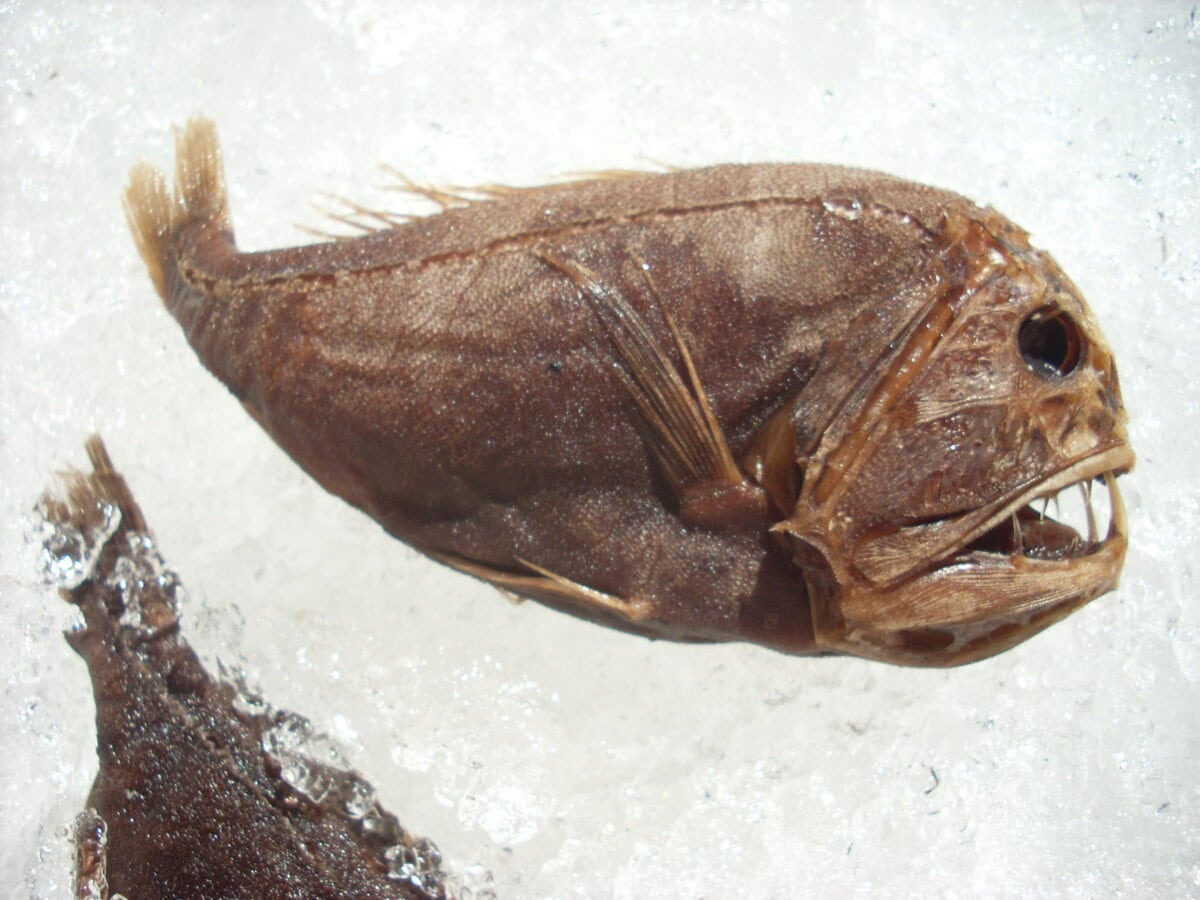
Despite its fearsome appearance, the fangtooth fish measures only about 6 inches long yet possesses the largest teeth in the ocean relative to body size. These deep-sea predators live at depths between 6,500 and 16,500 feet in temperate and tropical oceans worldwide. Their most distinctive feature is their disproportionately large, fang-like teeth that are so large the fish has evolved special pouches on the roof of its mouth to accommodate them when its mouth closes. These impressive teeth are essential for capturing prey in an environment where food is scarce and missed opportunities costly. Fangtooth fish have tiny eyes, relying more on sensory pores along their lateral lines to detect movement in the darkness. Young fangtooth fish look remarkably different from adults, living in much shallower waters before gradually migrating deeper and transforming into their distinctive adult form with enormous teeth and a more robust body structure.
5. Viperfish (Chauliodus sloani)

The viperfish is among the most ferocious-looking inhabitants of the deep, named for its snake-like appearance and enormous, fang-like teeth. Dwelling primarily at depths between 2,000 and 5,000 feet, these efficient predators grow to about 12 inches long. Their most distinctive features are their needle-sharp teeth, which are so large they can’t fit inside the mouth and instead curve back toward the eyes when the mouth is closed. The first dorsal spine has been modified into a long, whip-like rod tipped with a photophore (light-producing organ) that acts as a lure to attract prey. Viperfish are known to perform vertical migrations, moving toward shallower waters at night to hunt and returning to deeper waters during daylight. Their metabolism is remarkably slow, allowing them to survive the long intervals between meals that characterize life in the nutrient-poor deep sea. When prey approaches the viperfish’s lure, it can strike with remarkable speed, impaling victims on its long teeth.
4. Grenadier/Rattail Fish (Macrouridae)
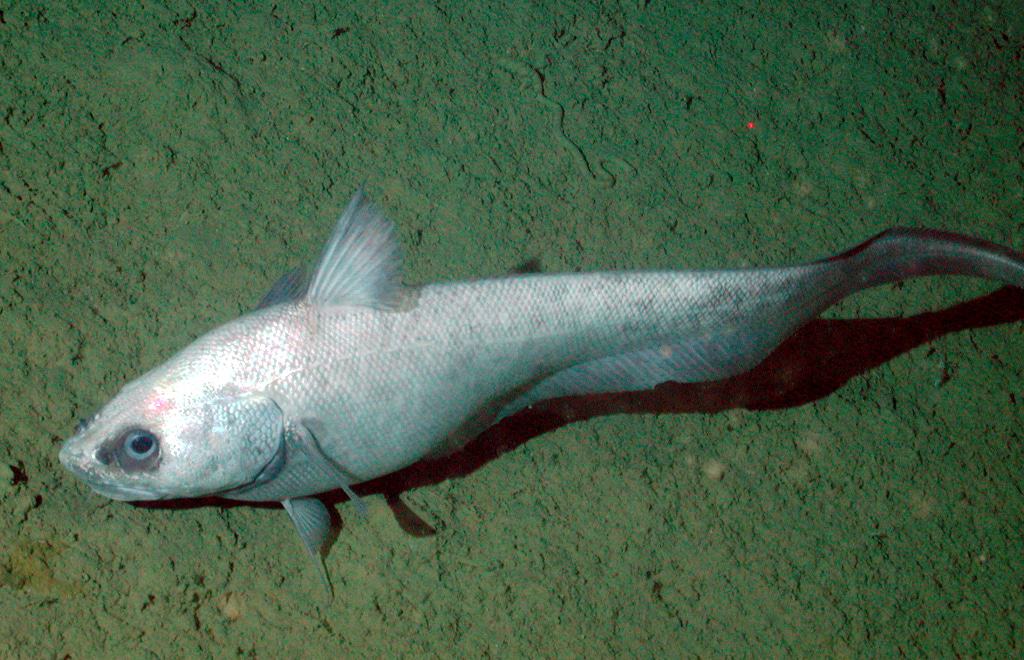
Grenadiers, also known as rattail fish, are among the most abundant deep-sea fish families with over 300 species identified. These benthopelagic fish occupy depths from 600 to an impressive 23,000 feet, making some species among the deepest-living fish. Their distinctive appearance includes a large head with a cone-shaped body that tapers to a long, thin tail resembling a rat’s—hence their common name. Most grenadiers grow to 1-2 feet in length, though some species can reach up to 5 feet. They possess large, sensitive eyes adapted for detecting the faintest light sources and an extensive lateral line system that can sense water movement and pressure changes. Rather than relying on vision alone, grenadiers have evolved specialized chin barbels containing taste buds and chemical receptors to help locate food in the darkness. They primarily feed on small crustaceans, worms, and other fish, often scavenging dead organisms that sink from upper ocean layers. Though rarely seen by humans, grenadiers dominate the deep-sea fish biomass in many regions.
3. Amphipods (Hirondellea gigas)

While many deep-sea creatures avoid extreme pressures, the hadal amphipod Hirondellea gigas thrives in the deepest ocean trenches, including the Mariana Trench at depths exceeding 36,000 feet. These crustaceans resemble giant shrimp-like creatures and typically grow to about 4 inches long—gigantic compared to their shallow-water relatives that measure just a few millimeters. Their pale, nearly transparent bodies contain special proteins and lipids that help them withstand the crushing pressure, which exceeds 16,000 pounds per square inch at maximum depths. Hirondellea gigas has evolved remarkable enzymes capable of breaking down wood and other plant material that reaches the deep ocean floor despite the extreme pressure and cold. Scientists have discovered these amphipods possess unique digestive capabilities, including producing their own “plastic-eating” enzymes that can break down human-made pollutants like PET plastic that have unfortunately reached even these remote regions. As scavengers, they quickly detect and swarm new food sources, such as dead fish falling from above, stripping carcasses down to the bone within hours.
2. Snailfish (Pseudoliparis swirei)

The Mariana snailfish (Pseudoliparis swirei) currently holds the record as the deepest-living fish species ever recorded, found swimming at the mind-boggling depth of 26,722 feet in the Mariana Trench. These small, pink, tadpole-like fish measure about 4 inches long and lack scales, instead having gelatinous, translucent skin that helps them withstand extreme pressure. Their bodies contain high concentrations of TMAO (trimethylamine N-oxide), a chemical that prevents proteins from being crushed under pressure. Unlike many deep-sea species that appear monstrous or bizarre, snailfish have a surprisingly delicate appearance with large heads, tapered bodies, and no visible teeth. They feed primarily on small crustaceans and other invertebrates they find on the seafloor. Perhaps most remarkably, snailfish appear to thrive at depths where pressure would crush most other vertebrates—their bodies are perfectly adapted to conditions that would kill almost any other fish. Scientists believe they may represent the absolute depth limit for fish physiology, as the fundamental structure of cellular proteins may not function beyond this threshold.
1. Sea Cucumber (Elpidia glacialis)

Among the most successful deep-sea colonizers, certain species of sea cucumbers like Elpidia glacialis have been found at nearly every depth, including the ocean’s deepest trenches below 33,000 feet. These echinoderms have soft, elongated bodies resembling their vegetable namesakes and typically grow 4-8 inches long in hadal environments. Unlike their shallow-water relatives, deep-sea sea cucumbers have evolved modified tube feet that function more like legs, allowing them to “walk” across the seafloor while searching for food. They feed by extending mucus-covered feeding tentacles to collect organic particles from the sediment or water, then bringing these tentacles to their mouth one by one. Their digestive systems are optimized to extract maximum nutrition from the nutrient-poor deep-sea environment. Some deep-sea species have developed the ability to “float” just above the seafloor using specialized appendages, reducing energy expenditure while feeding. Sea cucumbers play a critical ecological role in deep-sea ecosystems as deposit feeders, processing.
Conclusion:
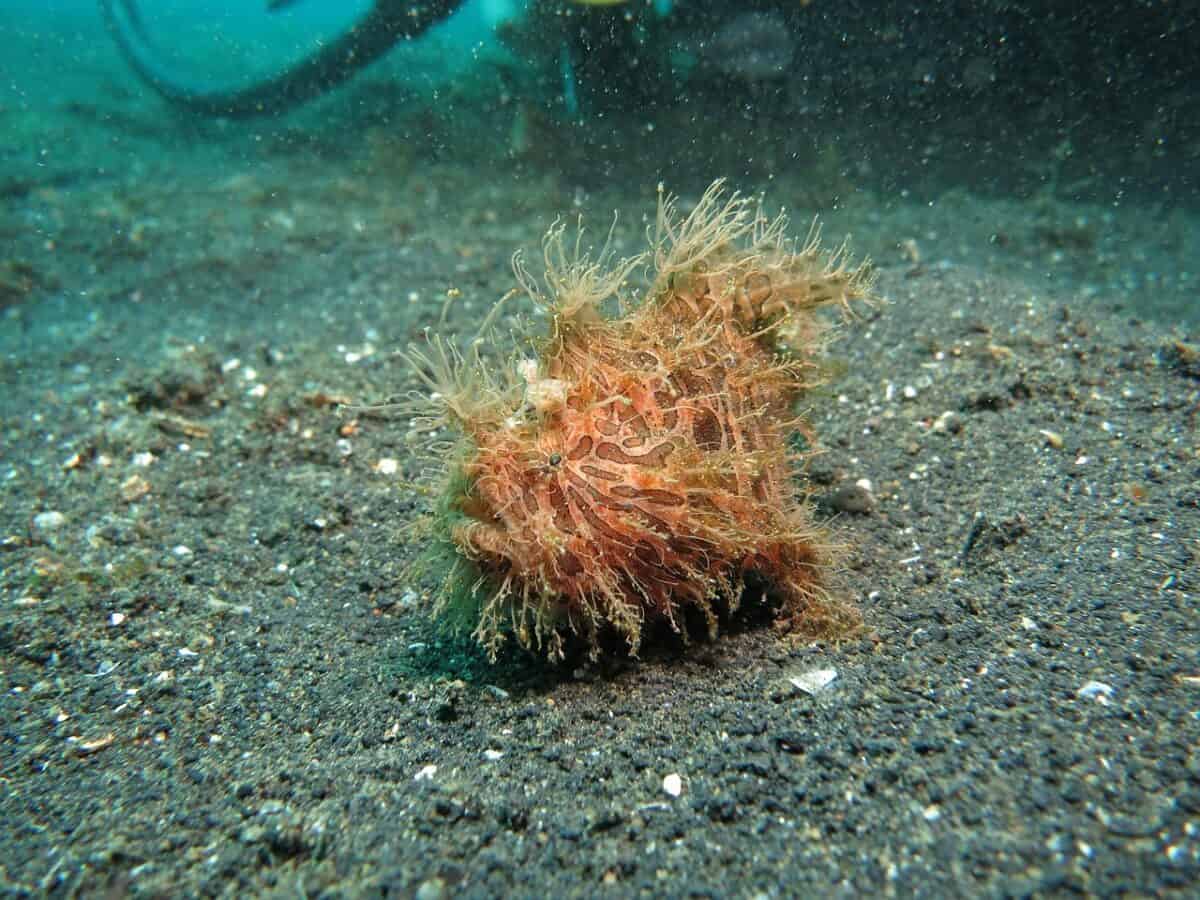
The deep ocean, often described as Earth’s final frontier, is a realm of extremes—perpetual darkness, crushing pressures, and near-freezing temperatures—yet it teems with lifeforms that challenge our understanding of biology and evolution. From the transparent-headed barreleye fish to the parasitic mating strategies of anglerfish and the “farming” behavior of yeti crabs, these 15 extraordinary creatures showcase the adaptability and diversity of life in one of the planet’s harshest environments. Each species not only reveals the resilience of nature but also underscores how much of our own planet remains unknown. As technology advances and exploration continues, the deep sea promises to yield even more wonders, reminding us of the importance of preserving these fragile, hidden ecosystems.
- 8 Times Animals Helped Solve Crimes in the Most Unexpected Ways - August 20, 2025
- 10 Stunning Animals You Can See in the Great Barrier Reef - August 20, 2025
- 14 Loudest Birds in the U.S. - August 20, 2025

